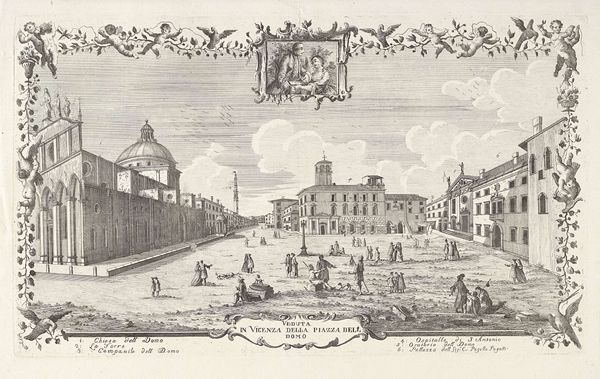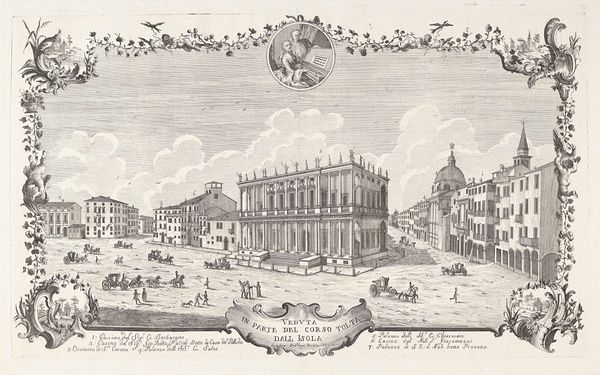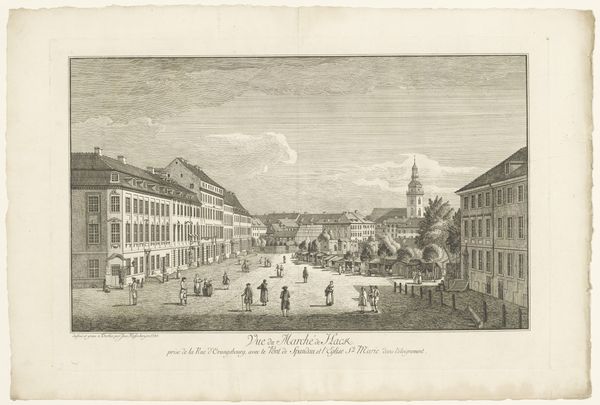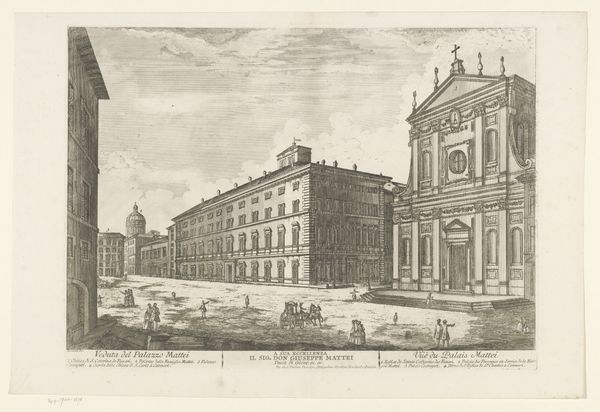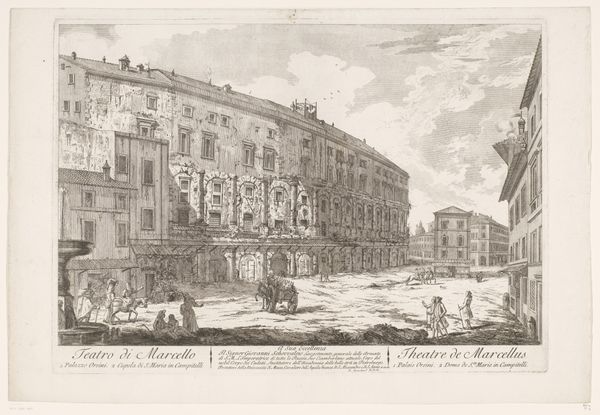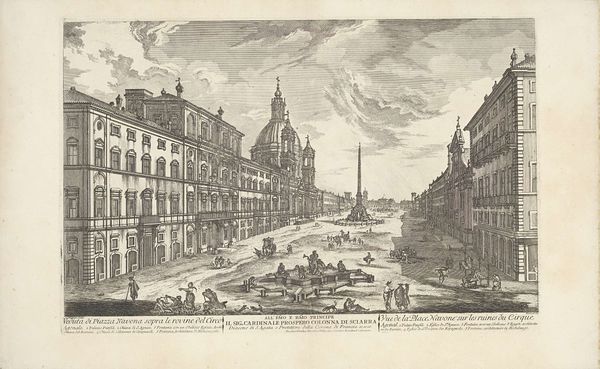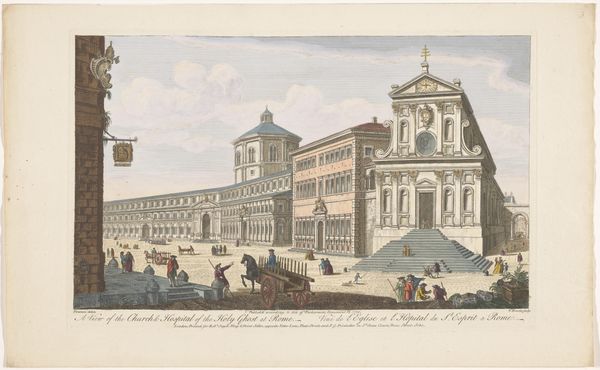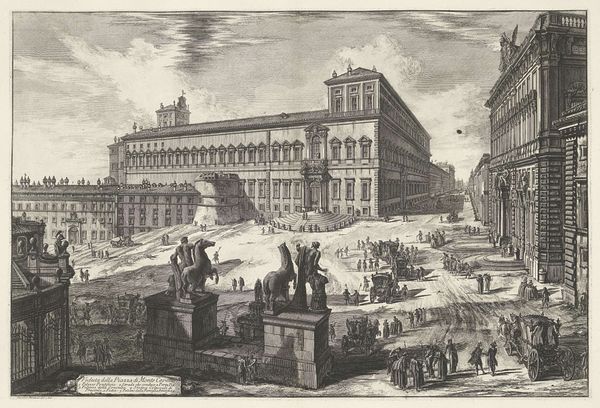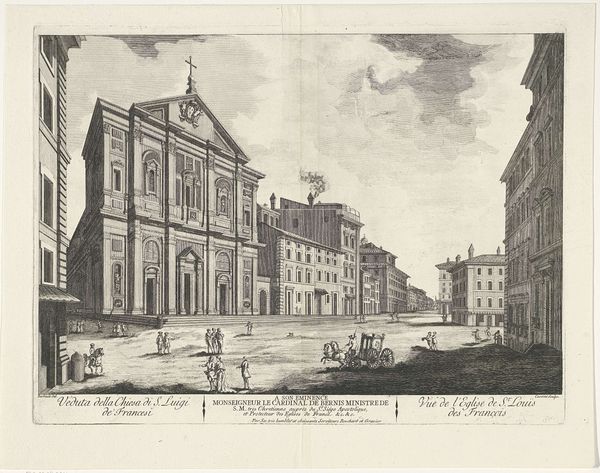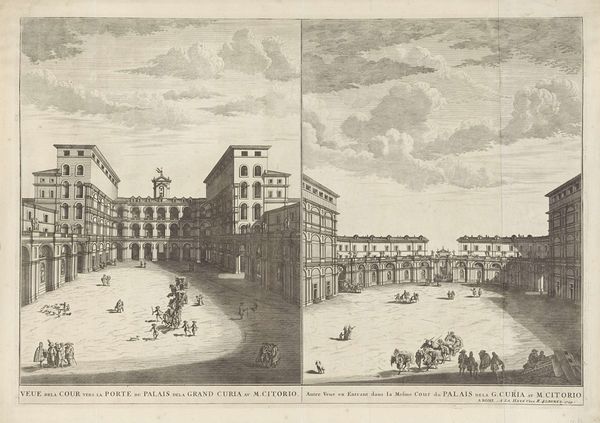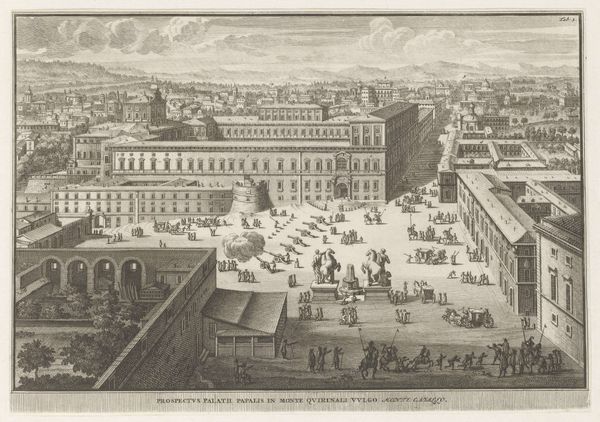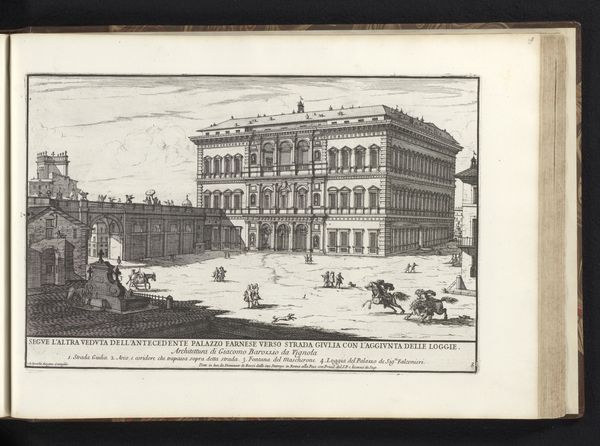
Dimensions: height 396 mm, width 543 mm
Copyright: Rijks Museum: Open Domain
Editor: Here we have Domenico Montaigú's "Piazza del Quirinale," an engraving from sometime between 1750 and 1799. It feels like a stage, doesn’t it? Grand buildings flank a vast, almost empty space populated by tiny figures. What strikes you about this piece? Curator: What I find compelling is the representation of power through urban planning. Consider how this vast, open space—the piazza—functions. It's not just an aesthetic choice. Editor: So, the emptiness isn’t really emptiness? Curator: Precisely. Think about Baroque Rome, heavily influenced by the papacy. These wide piazzas weren’t merely decorative; they were designed to impress, to control crowds, to facilitate processions and displays of papal authority. Can you imagine the impact of seeing a religious parade marching through here? Editor: Ah, so the space itself becomes a tool. I guess it puts the viewer in a specific place too, making them feel maybe small, but also connected to the grandeur of Rome. Curator: Exactly. And consider the role of engravings like this one. They weren't just art; they were a form of documentation, of propaganda even, showcasing the achievements and aspirations of the Church and Roman nobility to a wider audience. Disseminated widely, images such as these visually cemented papal claims of power throughout Europe. How do you see the act of 'sight-seeing' being influenced? Editor: I never really thought about it, I’m looking through someone else's eyes here, and their focus is on displaying the government. These architectural statements must have had political repercussions on other cityscapes in Europe too, creating these images to present to their own audiences, right? Curator: Absolutely, you’ve hit on a very significant point. The circulation of imagery of architectural designs and urban space facilitated how states demonstrated soft power through the adoption of new tastes across society. Editor: This makes me appreciate the layered meanings that go beyond its simple aesthetic, thank you! Curator: Indeed, the ‘empty’ space speaks volumes about power, representation, and the projection of authority through art.
Comments
No comments
Be the first to comment and join the conversation on the ultimate creative platform.

